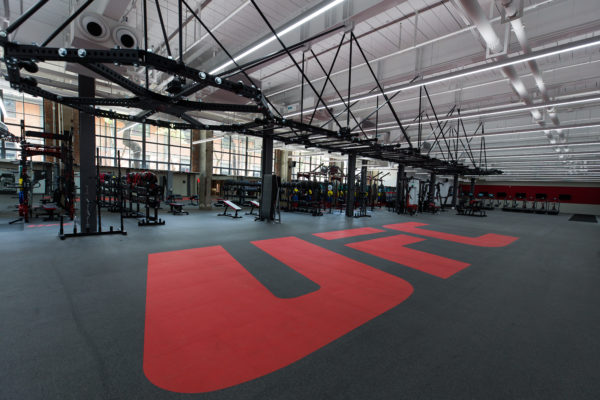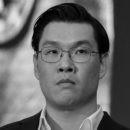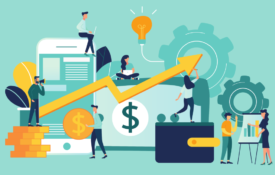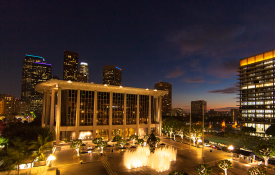Mixed martial arts is a global sport and over 50% of the athletes on the active roster of the Ultimate Fighting Championship (UFC) come from 76 regions outside of the U.S. In UFC, these athletes compete on the international stage against the best fighters in the world, their triumphs and tribulations resounding with hometown fans. UFC is the undisputed MMA leader in every corner of the globe, reaching 900 million households across 175 territories worldwide. As the next frontier, Asia is crucial to the company’s expansion, and UFC is investing time, resources, and capital to develop the sport and brand. Successes, particularly in recent years, have been swift and monumental.
A Historic 2021
While 2021 was a huge year for the company as a whole, it was especially remarkable for expansion in Asia. There were major developments in broadcast partnerships, history-making performances by Asian athletes, and record-breaking media metrics.
In China, UFC secured a new broadcast partnership with Migu, a subsidiary of China Mobile, in a landmark content-creation and distribution agreement that marks one of the most significant international partnerships in UFC history. Following the exit of Fox from Southeast Asia, UFC signed 10 new partnerships with the top broadcasters in the region. The unprecedented reach into Southeast Asia means that, for the first time, live commentary is presented in local languages, including Bahasa, Cantonese, Tagalog, Thai, and Vietnamese.

(L to R) Wu Yanan; Zhang Weili; David He; Han Jiuli; Curtis Blaydes; Kevin Chang; Li Jinliang; Song Kenan; Meng Wei. Photo by Yifan Ding via Getty Images.
During 2021, Asian athletes increased their presence in UFC with seven new signings from China, South Korea, and the Philippines, and, at the end of the year, six Asian athletes were ranked in the top 15 of their divisions. China’s first-ever UFC world champion Zhang Weili participated in two championship bouts, and the “Korean Zombie” Jung Chan-Sung is on the cusp of another title shot in 2022.
UFC’s social media accounts in Asia grew significantly. In China, UFC has over 13 million social followers—a growth of almost 40% year over year. UFC is now the most followed sports organization on Bilibili (a popular video-sharing site), second only to the NBA on Douyin (China’s TikTok) and top five on WeChat. In India, social localization resulted in astounding growth of 70% year on year. Media across Asia also engaged at an incredible pace, with an increase on average of 50%.
Investment in Building the Sport
While 2021 was a breakout year, the success of UFC in Asia has been snowballing since 2019. When the UFC Performance Institute (UFC PI) opened in Shanghai, its primary objective was to raise the bar on sports in China and Asia. The 93,000-square-foot facility is outfitted with the most advanced fitness equipment and technology and is staffed with a world-class team of professionals. Every aspect of an athlete’s preparedness for competition—including strength and conditioning, nutrition, sports psychology, and physical therapy—utilizes the innovative and proprietary UFC PI system. Each athlete at the UFC PI gets a customized training program developed from a science-based approach that ensures they are best prepared for competition or return from injury.
Investment in talent and properly accelerating their development is a key priority for UFC because local athletes are crucial in the world of sports. Nothing forges a connection with fans like a local hero who succeeds against the best in the world.

A training area within the UFC Performance Institute in Shanghai, China.
Weili epitomized this when she became UFC’s first Chinese world champion by winning the strawweight title in August 2019 on Chinese soil in Shenzhen, just three months after the UFC PI opened. It wasn’t blind luck; she was part of a generation of rising Chinese athletes who were established domestic stars. UFC puts them on the global stage and the social metrics reflect what we knew—that the market for Asian stars both at home and globally is massive. After Weili won the title, her social media followers rose tenfold, from just over a hundred thousand to 1 million.
UFC Academy
The beginning of the road starts with the UFC Academy, an MMA talent development program created and managed by the UFC PI. To select the most promising athletes, UFC hosts an invite-only Combine, where they are evaluated on 72 individual metrics relevant to MMA. Three Combines have been held so far, and over 50 athletes have been selected to receive full-ride scholarships at the UFC Academy. The fourth annual Combine is scheduled for March 2022.

UFC Combine attendees are able to receive scholarships for UFC Academy.
The program has delivered fantastic results: There are now six graduates of the UFC Academy with UFC contracts. Additionally, another six graduates became the first group of Chinese athletes to participate on Dana White’s Contender Series, the platform for prospects to show their skills in front of UFC President Dana White.
COC Partnership
In 2020, the UFC PI cemented its elite status within the sports industry when it became the Official High Performance Advisor and Training Facility of the Chinese Olympic Committee. This partnership has played a key role in helping Team China athletes train for domestic and international competitions, including the national and Olympic games in Tokyo.
Seven teams of China’s Olympic athletes in judo, wrestling, rowing, cycling, and swimming trained at the UFC PI, and they earned a total of 18 Olympic medals. Additionally, two of China’s promising snowboarders have created monumental awareness and presence in the media from their training leading up to the 2022 Winter Olympics. The fact that UFC athletes train the same way as Olympians, at the same facility, and are being benchmarked against them, highlights how UFC continues to bring MMA into the mainstream.
Localization

Kevin Chang, Vice President of UFC Asia-Pacific, interacts with media during the UFC PI Press Conference in Shanghai, China. Photo by Jeff Bottari via Getty Images.
To expand in this region, localization is paramount. Cultural awareness and sensitivity are key, as is establishing the right local partners, whether agencies, broadcasters, or sponsors. UFC strives to create locally relevant content tailored to different segments of the population within the country. The ability to localize our content highlighted an important strength for UFC: The brand is global and doesn’t belong to one particular country or region. UFC and MMA transcend borders like few sports can.
For example, in the mature market of Japan, the demand for UFC content is high, so we’ve invested in the creation of a Japanese language UFC FightPass, the world’s leading digital subscription service for combat sports, which also contains the entire UFC library.
In South Korea, representative athletes are hometown heroes, so fully planned media days are held for each bout announcement and victory tour television appearances are booked throughout their down time.
In a few short years during this expansion phase, we’ve executed a locally tailored approach, from social media content to media communications, that has obtained operational excellence as reflected by sustainable improvement in our KPIs.
Shaping UFC into a global iconic brand has always been the vision, and our strategy to expand in Asia is working. In a few short years, UFC has gone from a sports brand with potential to be a major sport in the region, to a locally relevant mainstream powerhouse with millions of fans, tremendous viewership, best-in-class partners, and national media interest. There were no shortcuts. Heavy investments in talent development, staffing, content production, fan events, and other key initiatives were made with long-term growth and sustainability in mind—and we are now seeing these efforts bear fruit.
Kevin Chang is senior vice president of UFC Asia.













































